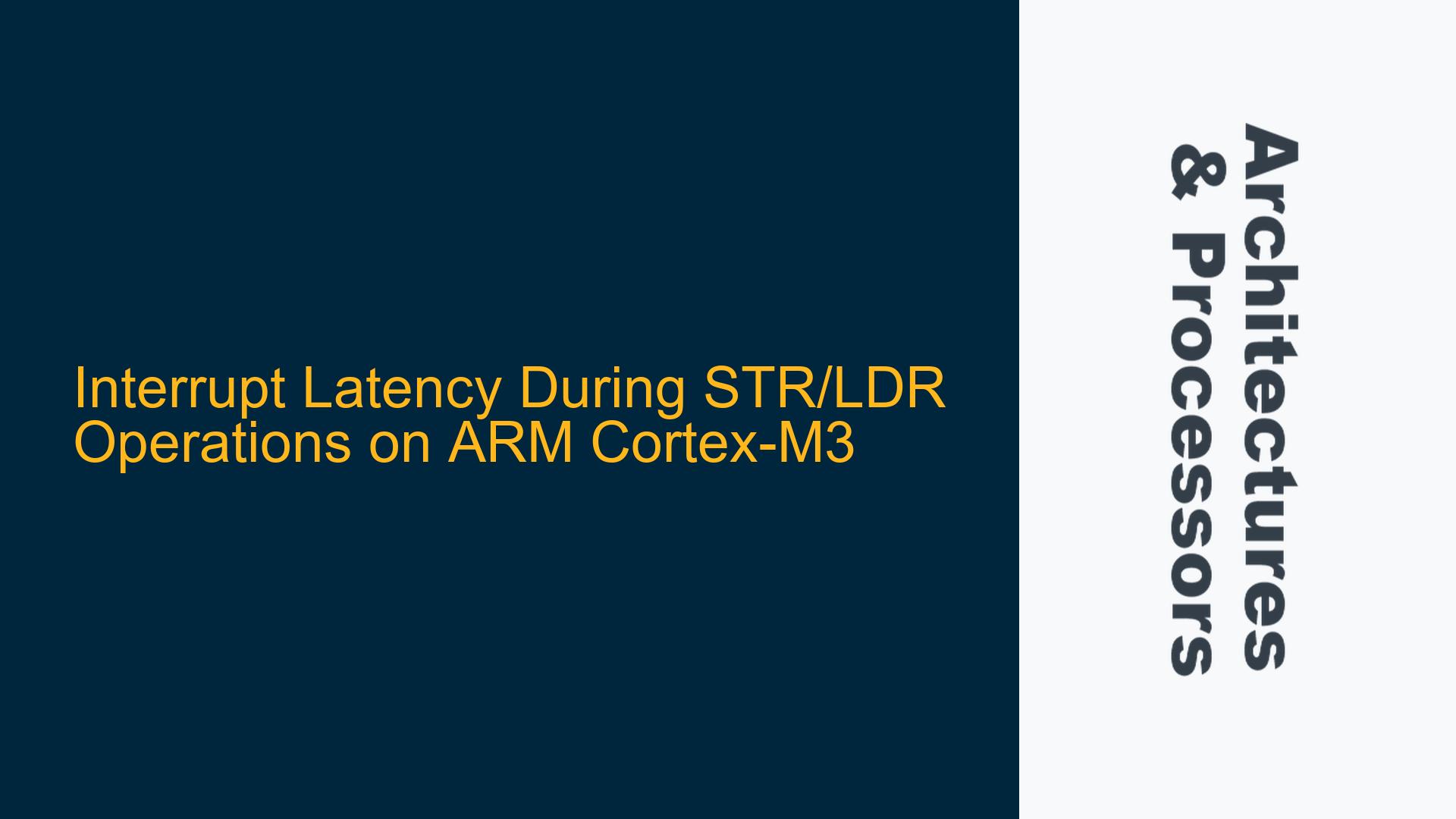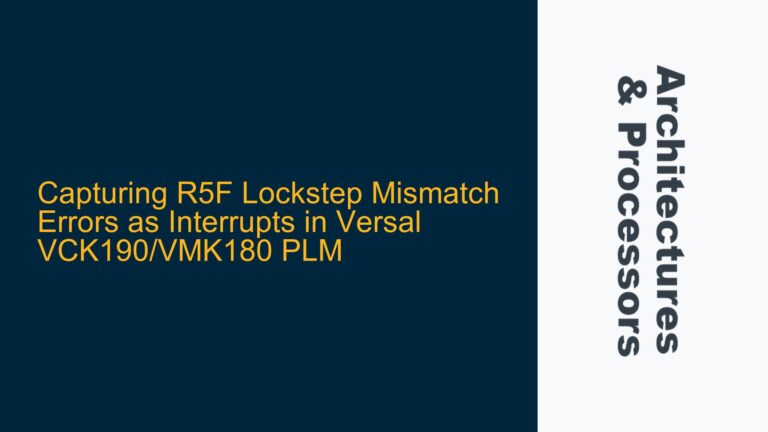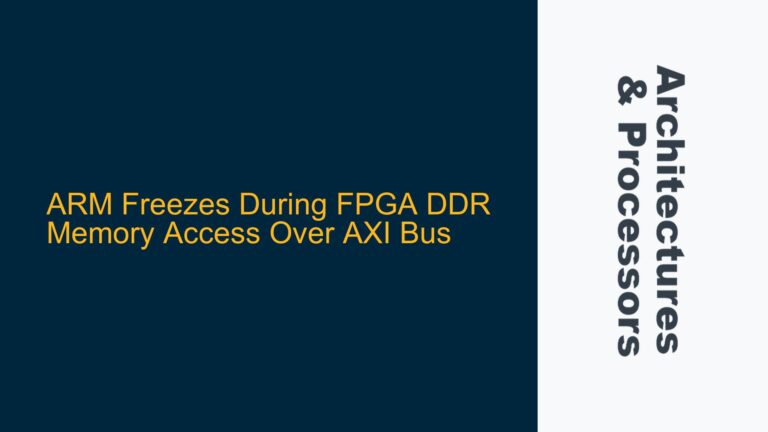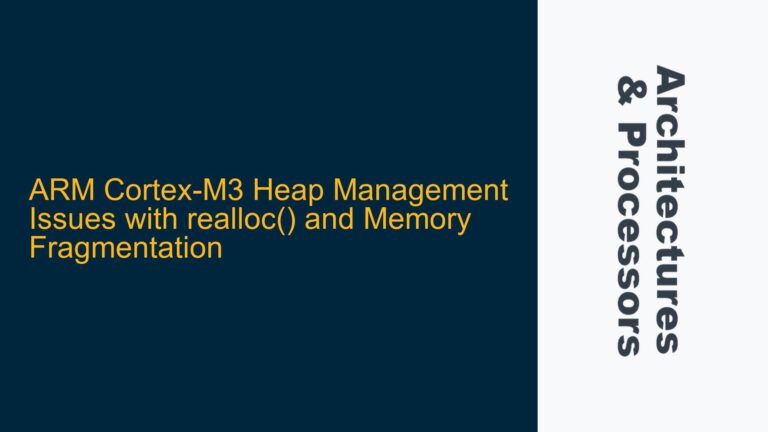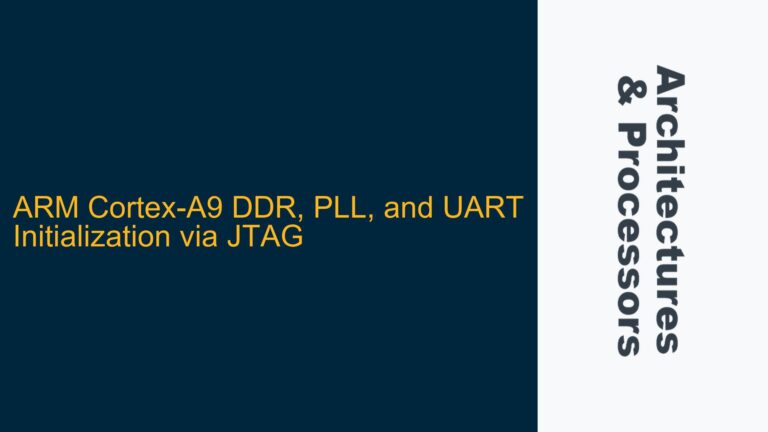ARM Cortex-M3 Interrupt Latency During AHB Memory Access
The ARM Cortex-M3 processor is widely used in embedded systems due to its balance of performance, power efficiency, and real-time capabilities. One of the critical aspects of real-time systems is interrupt latency, which is the time between the occurrence of an interrupt and the start of the interrupt service routine (ISR). In the context of the Cortex-M3, a specific scenario arises when the processor is executing STR (Store) or LDR (Load) instructions to access remote memory via the AHB (Advanced High-performance Bus). The question at hand is whether these memory access operations can delay the servicing of interrupts, even though the memory being accessed is normal memory and the instructions can be re-run.
The Cortex-M3 architecture is designed to handle interrupts efficiently, but certain conditions can lead to increased interrupt latency. When the processor is performing a memory access operation, particularly to a remote memory location over the AHB, the timing of the interrupt response can be affected. This is because the AHB bus operates at a different clock domain compared to the processor core, and the memory access operation may take multiple clock cycles to complete. During this time, the processor may not be able to respond to interrupts immediately, leading to increased latency.
Understanding the behavior of the Cortex-M3 in this scenario requires a deep dive into the processor’s architecture, the AHB bus protocol, and the interaction between the processor core and the memory subsystem. The Cortex-M3 uses a pipeline architecture, where instructions are executed in stages. When an interrupt occurs, the processor needs to complete the current instruction before it can switch to the ISR. However, in the case of STR/LDR instructions accessing remote memory, the instruction may take longer to complete due to the additional latency introduced by the AHB bus.
Memory Access Timing and Interrupt Handling in Cortex-M3
The Cortex-M3 processor is designed to handle interrupts with minimal latency, but the timing of memory access operations can impact this. When the processor issues a STR or LDR instruction to access memory over the AHB bus, the memory access operation is not interruptible. This means that the processor must complete the entire memory access operation before it can respond to an interrupt. The AHB bus is a high-performance bus that supports multiple outstanding transactions, but it also introduces additional latency due to its protocol and the need to synchronize between different clock domains.
The AHB bus protocol requires that memory access operations be completed in a specific sequence, and the processor must wait for the bus to acknowledge the completion of the operation before it can proceed. This waiting period can delay the processor’s response to interrupts, especially if the memory access operation takes multiple clock cycles to complete. The Cortex-M3 processor does not have the ability to preempt or interrupt a memory access operation once it has started, which means that the interrupt latency can be significantly increased if the processor is in the middle of a long memory access operation.
In addition to the AHB bus latency, the Cortex-M3 processor’s pipeline architecture also plays a role in determining the interrupt latency. The processor’s pipeline consists of several stages, including instruction fetch, decode, execute, and writeback. When an interrupt occurs, the processor must complete the current instruction in the execute stage before it can switch to the ISR. If the current instruction is a STR or LDR operation accessing remote memory, the execute stage may take longer to complete due to the AHB bus latency, further increasing the interrupt latency.
Optimizing Interrupt Latency During AHB Memory Access
To minimize interrupt latency during STR/LDR operations on the Cortex-M3, several strategies can be employed. One approach is to optimize the memory access patterns to reduce the number of long-latency memory operations. This can be achieved by using local memory or cache for frequently accessed data, reducing the need to access remote memory over the AHB bus. Another approach is to use DMA (Direct Memory Access) for bulk data transfers, offloading the processor from handling long-latency memory operations and allowing it to respond to interrupts more quickly.
Another important consideration is the use of memory barriers and cache management techniques to ensure that memory access operations are completed in a timely manner. The Cortex-M3 processor supports data synchronization barriers (DSB) and instruction synchronization barriers (ISB) that can be used to enforce the completion of memory access operations before proceeding to the next instruction. By strategically placing these barriers in the code, it is possible to ensure that memory access operations do not unnecessarily delay the processor’s response to interrupts.
In addition to these software-based optimizations, hardware designers can also take steps to minimize the impact of AHB bus latency on interrupt latency. This can include using faster memory technologies, optimizing the AHB bus protocol to reduce the number of clock cycles required for memory access operations, and ensuring that the processor and memory subsystem are properly synchronized to minimize the impact of clock domain crossing.
In conclusion, while the Cortex-M3 processor is designed to handle interrupts with minimal latency, the timing of memory access operations over the AHB bus can impact the processor’s ability to respond to interrupts quickly. By understanding the interaction between the processor core, the AHB bus, and the memory subsystem, and by employing appropriate optimization strategies, it is possible to minimize interrupt latency and ensure that the processor can respond to interrupts in a timely manner, even during long-latency memory access operations.
